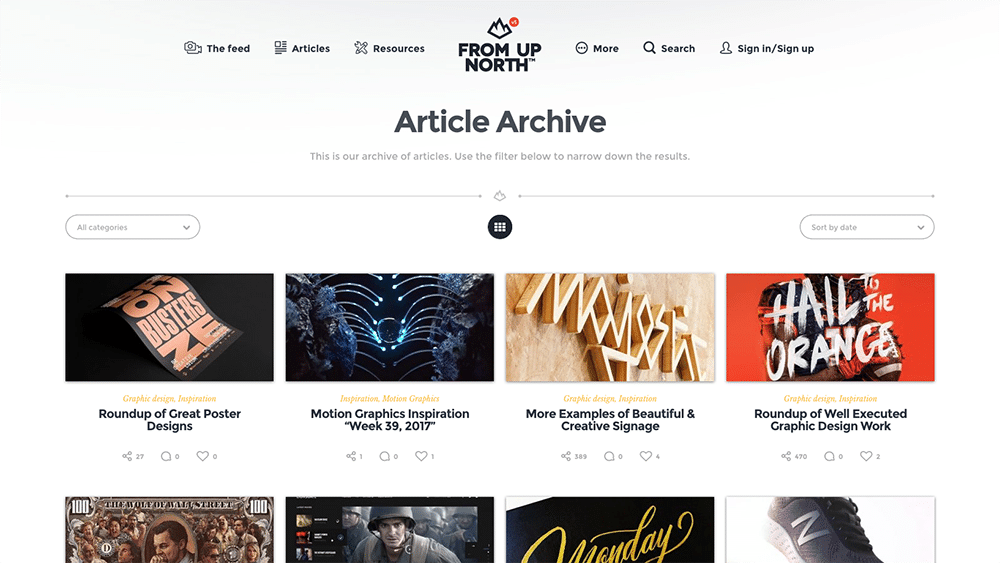Website Design for E-commerce: Best Practices for a Seamless Shopping Experience
Website Design for E-commerce: Best Practices for a Seamless Shopping Experience
Blog Article
Modern Site Style That Captures Interest and Converts
In an increasingly digital landscape, modern site layout has actually emerged as a pivotal variable in capturing customer attention and driving conversions. As we check out these vital components, it becomes clear that recognizing their interaction can substantially affect a website's performance and user complete satisfaction.
Importance of Visual Hierarchy
Visual pecking order is an important component in web site style, as it guides individuals' interest and enhances their total experience. By strategically organizing content, developers can guide individuals to one of the most important info first, consequently raising interaction and boosting functionality. Efficient aesthetic hierarchy uses various strategies, including dimension, contrast, spacing, and color. Bigger elements naturally attract the eye, while contrasting colors can highlight vital messages, making them stand out among more subdued parts.
Incorporating a rational circulation in web content setup is vital; for example, putting one of the most essential info on top of a page cultivates prompt recognition. Constant use of typography, such as varying font dimensions and styles, helps develop a clear material structure. This company not only help in navigating but likewise builds count on, as users feel more comfy when they can quickly locate what they are searching for.
Inevitably, a well-executed aesthetic pecking order not only boosts aesthetic charm yet also substantially influences individual habits. By prioritizing vital aspects and making certain a seamless experience, developers can efficiently convert visitors right into customers, enhancing the value of this fundamental layout principle in contemporary website growth.
Responsive Layout for All Tools
Developing a smooth experience throughout different tools is vital in today's electronic landscape, where individuals access sites from smartphones, desktops, and tablets alike. Responsive layout is a crucial strategy that guarantees internet sites adjust fluidly to different screen alignments, sizes, and resolutions. By using flexible grids, images, and CSS media queries, developers can produce designs that keep aesthetic integrity and performance, no matter the tool being used.
The significance of receptive style expands past visual appeals; it straight influences individual engagement and conversion rates. A site that functions well on all devices encourages longer sees and minimizes bounce rates, as individuals are more likely to engage with web content that is easy to browse. Search engines, particularly Google, prioritize mobile-friendly sites in their rankings, making responsive layout an essential component of search engine optimization (SEARCH ENGINE OPTIMIZATION)
Integrating receptive design not only enhances user experience but additionally streamlines the growth process. By developing a single website that works throughout tools, companies can save time and resources compared to creating different mobile and desktop computer versions. Eventually, receptive style is a fundamental approach for modern-day site layout, making sure access and complete satisfaction for all customers, despite their gadget.
Involving Interactive Aspects
While a receptive design lays the foundation for a useful site, incorporating interesting interactive elements is important for capturing customer interest and cultivating deeper links. Website Design. Interactive elements, such as computer animations, quizzes, and clickable infographics, create a more vibrant individual experience, urging visitors to spend even more time on the site
Incorporating interactive functions can additionally lead individuals with facility information, making it much easier to digest web content. For instance, interactive sliders can illustrate item variations, while embedded videos can supply presentations or testimonies that reverberate more than fixed photos or message. Gamification strategies, like incentives for completing jobs or engaging with content, can boost Bonuses individual inspiration and retention.
Reliable usage of interactive components not only improves the user experience yet can likewise lead to greater conversion prices. It is essential to balance interactivity with performance; extremely complicated features may hinder site speed, negatively influencing customer contentment.
Structured Navigation Practices
Reliable navigating is a cornerstone of any kind of effective website, as it directly influences individual experience and material accessibility. Structured navigating methods make sure that users can quickly find information, boosting their communication with the site. A well-structured navigating menu should be intuitive and straightforward, usually featuring a minimal variety of primary classifications to stay clear of overwhelming visitors.
To attain streamlined navigating, designers need to prioritize an ordered structure that rationally arranges material. Implementing breadcrumb tracks can give users with context regarding their existing location within the site, enabling for smooth backtracking. Additionally, making use of drop-down menus can properly save space while still providing accessibility to subcategories.
Receptive style is vital, as navigation ought to be functional throughout all tools (Website Design). Mobile customers, specifically, advantage from touch-friendly menus and retractable areas that maintain functionality without endangering aesthetics

Efficient Call-to-Action Techniques
A well-crafted call-to-action (CTA) is crucial for guiding individuals towards preferred outcomes on a website, as it motivates them to engage with content or buy. To optimize their performance, CTAs need our website to be clear, compelling, and purposefully positioned throughout the site.
First, utilize action-oriented language that connects necessity or worth, such as "Get Begun," "Join Now," or "Claim Your Discount." This language not only motivates individuals however additionally establishes clear assumptions about the following actions.
2nd, take into consideration design components; CTAs should stand apart aesthetically via contrasting colors, enough whitespace, and prominent positioning. A switch that is simple to see and click increases the likelihood of individual communication.
Furthermore, individualizing CTAs based on customer actions or demographics can substantially improve engagement. Customized messages resonate more with users, driving higher conversion rates.

Conclusion
These components jointly enhance individual experience, making certain that visitors continue to be engaged and inspired to check out material even more. By focusing on these layout concepts, businesses can significantly enhance customer retention and conversion prices, inevitably leading to higher success in the electronic landscape.
In a progressively electronic landscape, contemporary website layout has arised as a pivotal factor in catching user interest and driving conversions.Aesthetic hierarchy is an important component in internet site design, as it overviews users' interest and boosts their total experience.The value of receptive layout extends beyond aesthetic appeals; it straight affects customer interaction and conversion prices.Incorporating responsive style not just boosts individual experience yet likewise enhances the advancement process. Ultimately, receptive style is a fundamental approach for contemporary internet site layout, ensuring availability and satisfaction for all customers, regardless of their device.
Report this page